Bridging Language Gaps with Story-Based Technology
Children with autism often face challenges in language development and communication. Story-based apps, integrated with principles from established therapies like Applied Behavior Analysis (ABA), are emerging as effective tools to support language acquisition and social skills. This article explores how these technologies work alongside behavioral interventions to foster independence and positive behaviors in children with autism.
Understanding ABA Therapy and Its Role in Autism Language Development
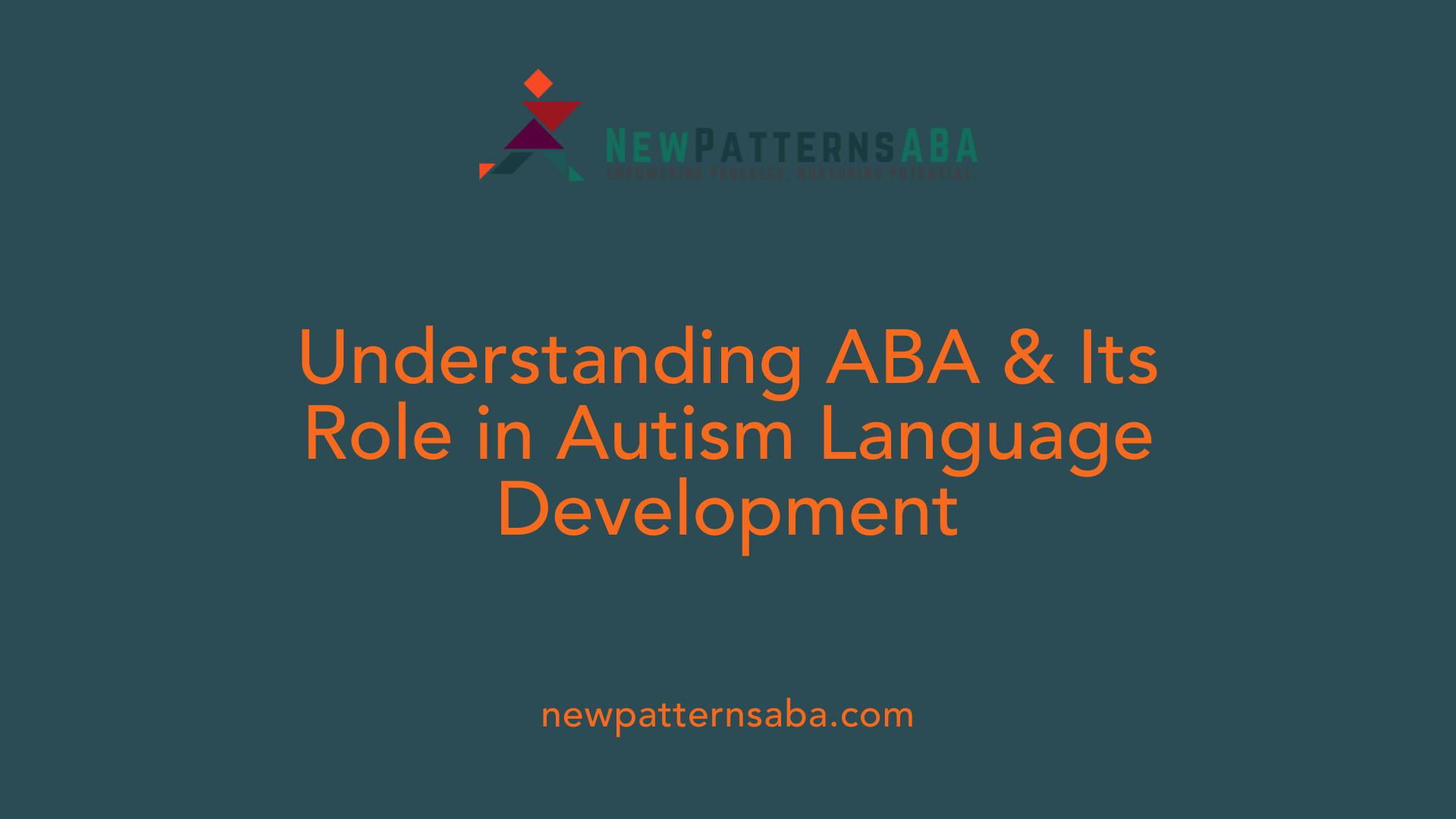
What is Applied Behavior Analysis (ABA) therapy and how does it help individuals with autism?
Applied Behavior Analysis (ABA) therapy is a scientifically grounded approach designed to support individuals with autism by encouraging positive behaviors and skill development through learning principles. ABA focuses on assessing an individual's strengths and needs to create tailored goals, especially targeting communication and social skills.
How does ABA support language and communication skills?
Language and communication are central focuses in ABA programs. Therapists use strategies like positive reinforcement to encourage speech, naturalistic teaching methods where learning occurs in everyday settings, and prompting techniques to guide children toward effective communication. These approaches aim to gradually improve a child's ability to express needs, understand others, and participate socially.
How is ABA customized for each child?
ABA interventions are highly individualized. Qualified Behavior Analysts continuously collect data to monitor progress and adjust strategies. Therapy plans are personalized to the child's developmental level, preferences, and family goals. Early intervention, especially between ages 2 to 6, is emphasized to maximize developmental gains and foster independence.
In summary, ABA therapy plays a vital role in language development for children with autism by providing structured and personalized support to build essential communication skills and promote independence.
Qualifications of Professionals Delivering ABA Therapy
What qualifications should professionals providing ABA therapy have?
Professionals providing Applied Behavior Analysis (ABA) therapy typically hold specialized credentials such as the Board Certified Behavior Analyst (BCBA) certification. Achieving this credential requires completing a master's degree in applied behavior analysis or a closely related field. In addition, candidates must complete supervised fieldwork ranging from 1,500 to 2,000 hours.
After these requirements, candidates must pass a standardized exam administered by the Behavior Analysis Certification Board (BACB). Many states also require licensure, which ensures that practitioners meet specific educational and professional standards and adhere to recognized ethical codes.
These professionals must possess skills in conducting behavioral assessments, designing and implementing individualized interventions, and utilizing practical ABA strategies such as positive reinforcement and modeling. Ethical standards are foundational to their practice, emphasizing beneficence (promoting well-being), nonmaleficence (avoiding harm), and respect for client dignity.
Ongoing professional development and adherence to evolving best practices are also essential to maintain competence and deliver effective, compassionate care in ABA therapy.
Techniques in ABA That Enhance Language Through Story-Based Apps
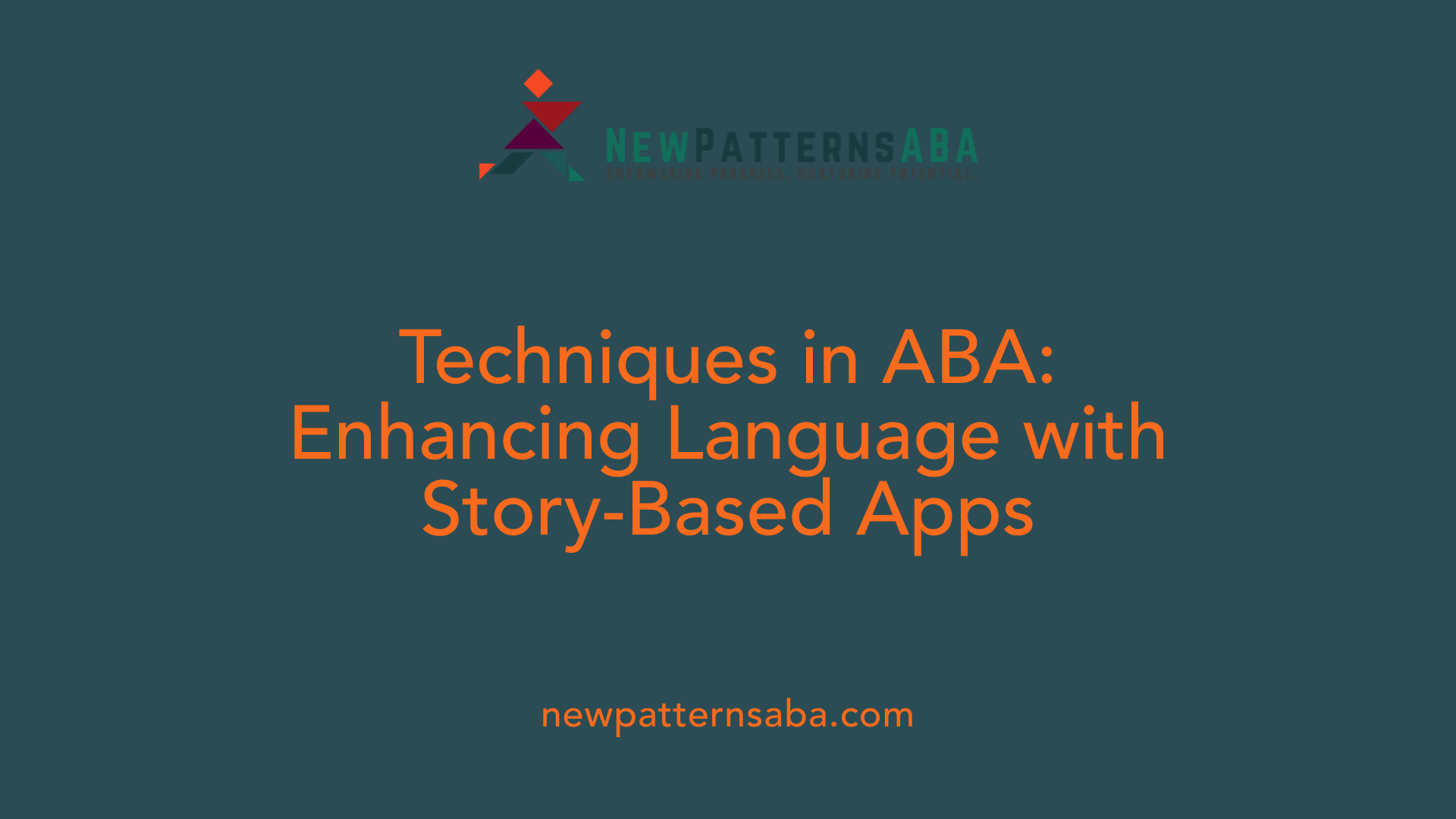
What are the common techniques used in ABA therapy to encourage positive behaviors?
ABA therapy employs several effective strategies to foster positive behaviors and support language development. Positive reinforcement is central, rewarding desirable behaviors to encourage repetition. Modeling demonstrates specific behaviors for children to imitate, while prompting provides cues or assistance that are gradually faded to promote independence.
Naturalistic teaching methods integrate learning into daily activities, helping children apply skills in real-world contexts. This approach aligns well with story-based apps like Tucker the Turtle, which use social stories to illustrate appropriate behaviors in engaging ways.
How do story-based social and behavioral apps support these techniques?
Apps such as Choiceworks and MindYeti reinforce routines and emotional regulation through interactive storytelling that embeds behavioral lessons. Choiceworks helps children build independence by visually mapping daily tasks and feelings, supporting the principles of prompting and positive reinforcement.
Mindfulness apps like DreamyKid cultivate calm and focus, complementing biofeedback games like Mightier that teach self-regulation through gameplay. These tools align with ABA’s focus on clinical evidence-based methods to reduce challenging behaviors.
How are naturalistic teaching methods applied with story-based apps?
Naturalistic methods focus on learning in natural contexts, which story-based apps facilitate by embedding learning within relatable narratives and everyday scenarios. This encourages children to generalize language and social skills beyond the therapy setting.
By combining positive reinforcement, modeling, prompting, and naturalistic teaching, story-based social and behavioral apps provide a modern, engaging platform for advancing language and behavior skills in children, especially those with autism or developmental challenges.
Digital Tools Supporting ABA Therapy: Story-Based Apps and Beyond
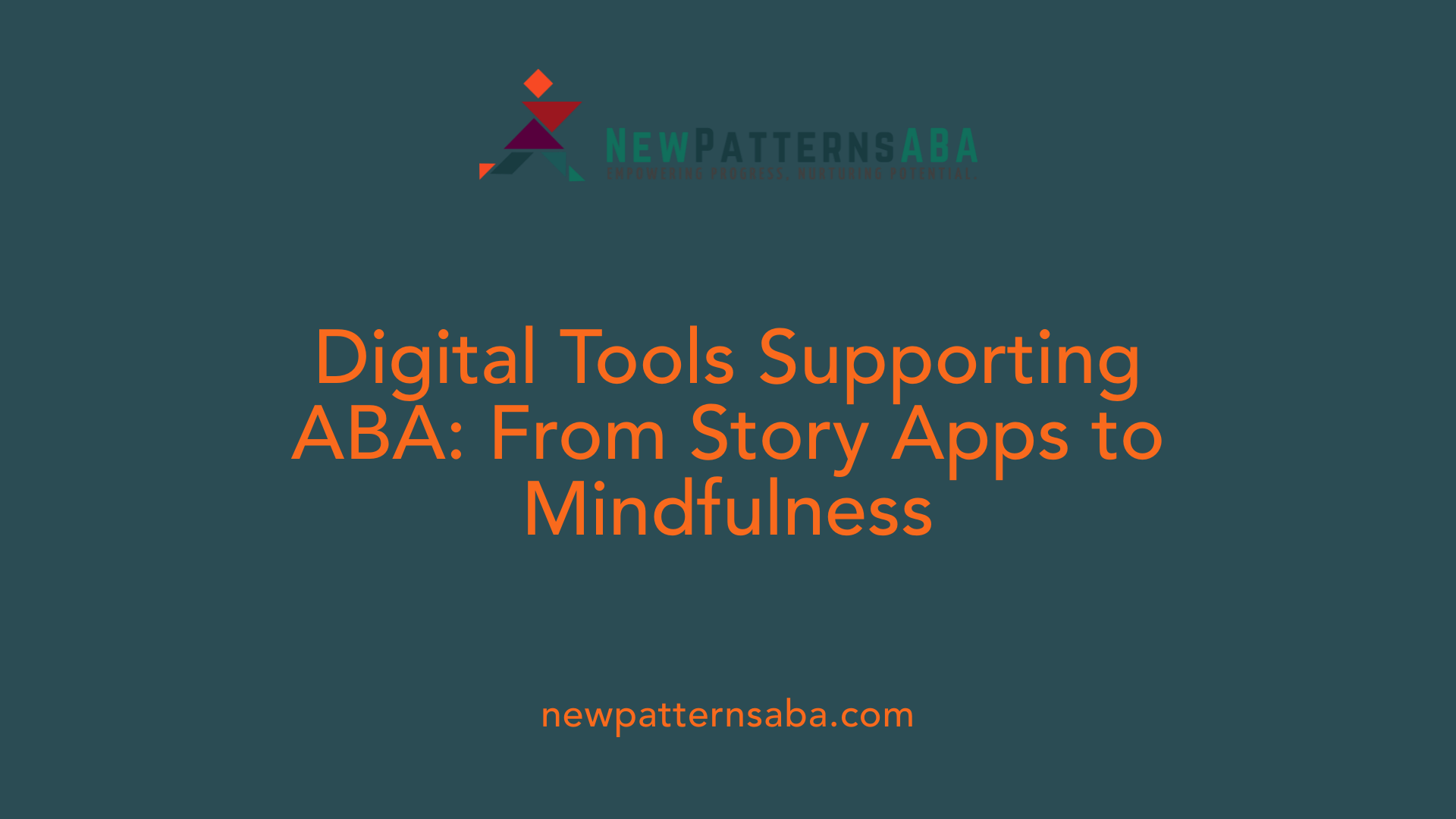
How Does Choiceworks Support Children with Routines and Emotional Regulation?
Choiceworks is an app created with input from child development specialists to help children manage daily routines and control their emotions. By using visual schedules and simple prompts, it encourages kids to build independence and develop positive behavior patterns. This is especially beneficial in ABA therapy, where consistent routines and emotional regulation are foundational.
What Is the Role of Mightier’s Biofeedback Game in Teaching Self-Regulation?
Mightier offers an innovative video game system that uses biofeedback to teach children aged 6 to 14 how to calm themselves and regulate strong emotions. Through engaging gameplay, children learn breathing and relaxation techniques. Clinical trials have shown Mightier significantly reduces outbursts and oppositional behaviors, making it a promising digital support tool in behavioral interventions.
How Do Social Stories Like Tucker the Turtle Aid in Behavioral Learning?
Social stories, such as Tucker the Turtle, use storytelling to model appropriate responses during emotional moments. They help children grasp social cues and develop coping strategies in an accessible and gentle way. Incorporating such stories into ABA therapy reinforces learners’ understanding of expected behaviors and emotional management.
What Benefits Do Mindfulness Apps Like DreamyKid Offer?
Mindfulness apps like DreamyKid introduce children to relaxation and focus-building exercises through guided activities. These apps complement ABA therapy by fostering emotional awareness and reducing anxiety. Using technology to practice mindfulness gives children accessible ways to self-soothe and improve their emotional resilience.
| Tool/App | Primary Function | Suitable Age Range | Benefits in ABA Therapy |
|---|---|---|---|
| Choiceworks | Routine management and emotional regulation | Young children | Builds independence; supports positive behavior |
| Mightier | Biofeedback video game for self-regulation | 6–14 years | Reduces outbursts; teaches calming skills |
| Tucker the Turtle | Social story for emotional coping | Preschool to early elementary | Enhances understanding of emotions; promotes social skills |
| DreamyKid | Mindfulness and relaxation app | Children of various ages | Improves focus; reduces anxiety |
Integrating Behavioral Intervention Programs with Technology
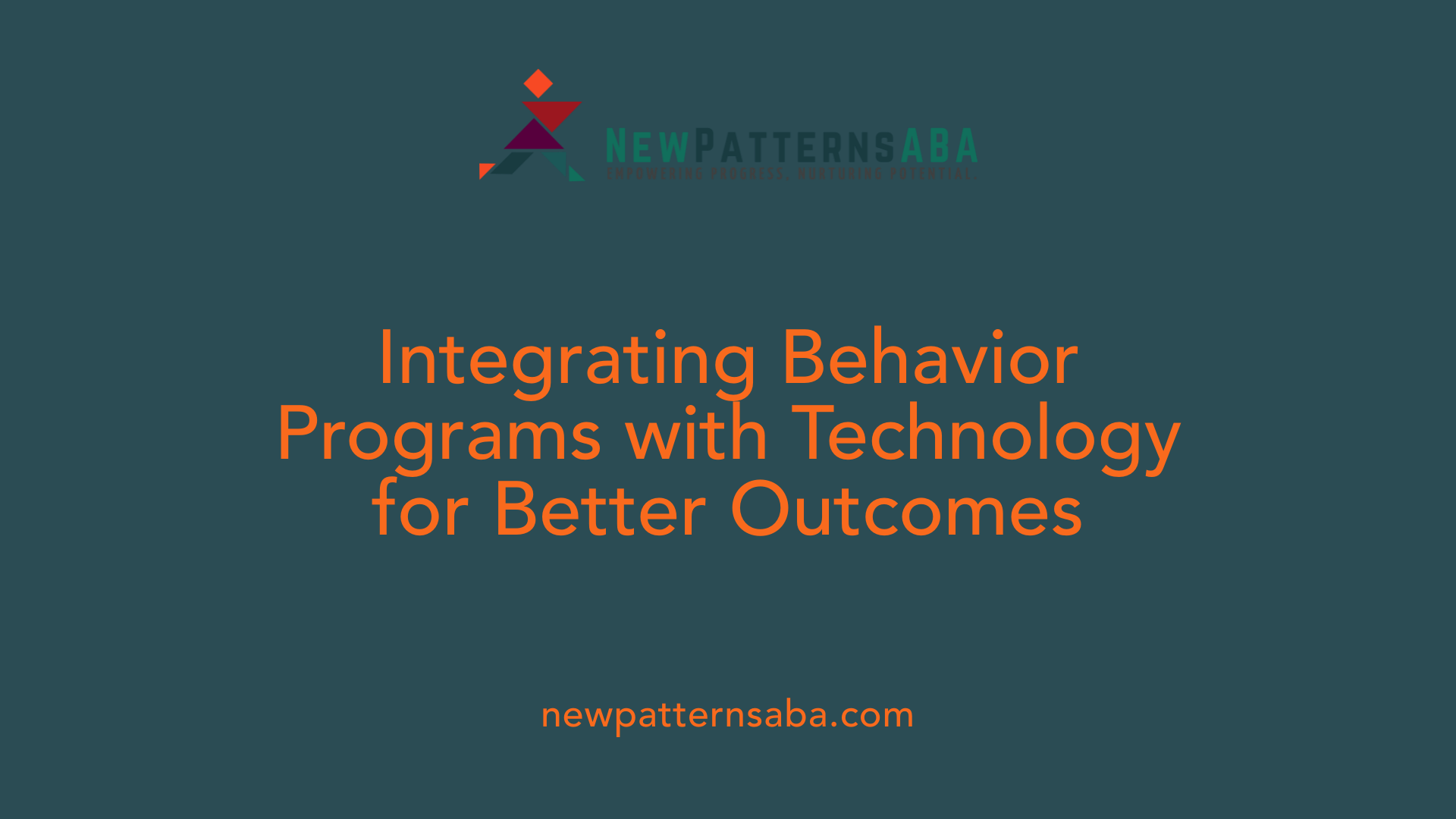
What Are Naturalistic Developmental Behavioral Interventions Like JASPER and Early Start Denver Model?
Naturalistic developmental behavioral interventions (NDBIs) combine behavioral strategies with developmental science to support children with autism in natural settings. JASPER (Joint Attention, Symbolic Play, Engagement, and Regulation) focuses on enhancing social communication and play skills. The Early Start Denver Model emphasizes early intervention using play-based activities to target social, cognitive, and language development.
These approaches differ from traditional ABA by embedding learning opportunities during everyday interactions, making skill acquisition more natural and generalized.
How Does Family and Caregiver Involvement Enhance Technology Use in Interventions?
Family and caregivers play a crucial role in maximizing the benefits of tech tools paired with behavioral programs. Their involvement ensures consistent implementation and reinforcement of learned skills outside therapy sessions. For example, apps like Choiceworks help children understand and follow daily routines, fostering independence with caregiver guidance.
Caregivers trained in these technologies can better support emotional regulation and behavior management strategies learned through therapy. This partnership bridges clinical settings and home, creating a supportive environment for the child's progress.
Combining Apps and Behavioral Strategies for Better Outcomes
Integrating apps such as Choiceworks and Mightier with behavioral programs allows personalized, interactive skill-building tailored to each child's needs. Choiceworks assists with routine completion and emotional regulation, enhancing daily functioning and self-management. Meanwhile, Mightier uses biofeedback gaming to teach calming techniques, with clinical evidence showing reductions in outbursts and oppositional behaviors.
Other supportive tools include mindfulness apps like DreamyKid and social stories like Tucker the Turtle, which complement structured interventions by encouraging self-awareness and coping skills.
Together, these technologies and behavioral interventions create a comprehensive support network that aids skill generalization, promotes independence, and encourages positive behaviors in children with autism.
How Is ABA Therapy Customized for Different Individuals with Autism?
ABA therapy is highly individualized, tailored through assessments and ongoing data collection to address each child’s unique needs and strengths. Therapists craft personalized plans focusing on communication, social skills, self-care, and academics. The approach adapts to various settings, using evidence-based techniques such as positive reinforcement and the A-B-Cs model to modify behavior effectively. Family training is integral to maintain consistent skill use across environments. Customization ensures interventions remain relevant and effective as the child develops.
| Intervention/Tool | Description | Role in Integration |
|---|---|---|
| JASPER | Improves social communication & play | Naturalistic settings learning |
| Early Start Denver Model | Early, play-based developmental intervention | Early multi-domain skill development |
| Choiceworks | Routine and emotional regulation app | Fosters independence with family support |
| Mightier | Biofeedback video game for self-regulation | Builds calming skills, reduces outbursts |
| DreamyKid & Tucker the Turtle | Mindfulness apps and social stories | Reinforce emotional coping and awareness |
By intertwining these tools with personalized behavioral interventions and caregiver involvement, children receive broad support promoting positive growth and skill generalization.
The Evidence Base for Using Story-Based and Behavioral Apps in Autism Therapy
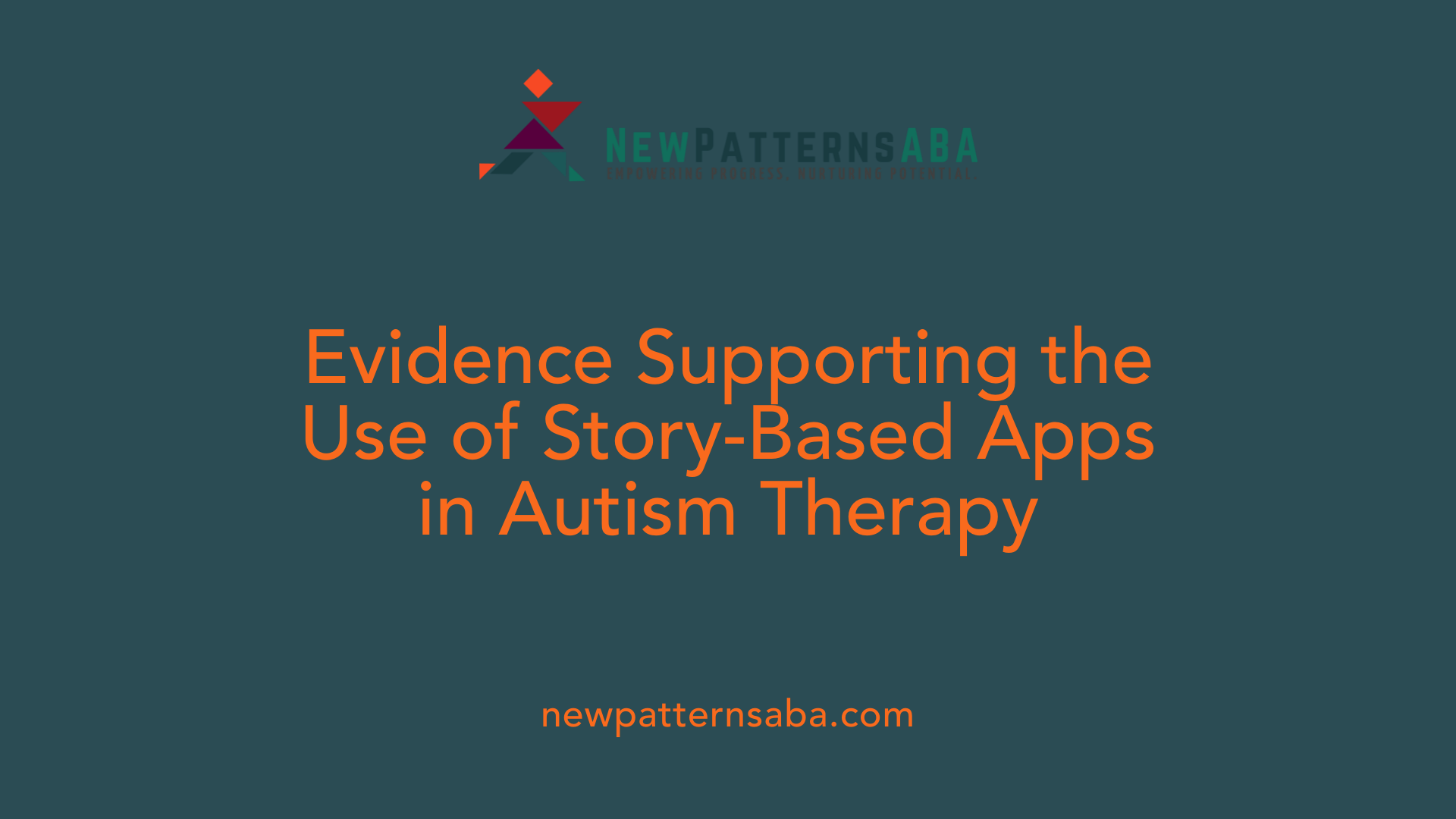
What evidence supports the effectiveness of ABA therapy for autism?
Numerous scientific studies strongly support Applied Behavior Analysis (ABA) therapy as an effective intervention for individuals with autism spectrum disorder. Research shows ABA significantly improves social, communication, and adaptive behaviors. Gains are seen in language, attention, and daily living skills, particularly when intervention begins early and is consistently provided by trained professionals. Parental involvement enhances these results further. Over 20 rigorous studies reveal ABA therapy's long-term benefits, and respected bodies like the US Surgeon General and American Psychological Association endorse it as an evidence-based treatment. ABA’s structured, personalized approach helps children with autism achieve meaningful progress across multiple developmental domains.
What clinical trial results have been reported for apps like Mightier?
Mightier is a biofeedback video game system designed to teach self-regulation and calming skills to children aged 6–14. Clinical trials have demonstrated significant reductions in behavioral outbursts and oppositional behaviors among users. This app leverages technology to support emotional regulation, making behavior management engaging and accessible for children. Other apps, such as Choiceworks, complement ABA by fostering routines and independence through interactive visual supports, while mindfulness apps like DreamyKid and social story tools like Tucker the Turtle address emotional and social challenges linked to autism.
Are these approaches endorsed by professional organizations?
Yes. The use of behavioral interventions, including those supported by technology, is well aligned with current best practices in autism therapy. Modern ABA therapies frequently incorporate naturalistic developmental behavioral interventions (NDBI) like JASPER and the Early Start Denver Model. These approaches combine behavioral strategies with developmental and relationship-based techniques, enhancing social communication and reducing challenging behaviors. Professional organizations recognize these as effective methods to complement traditional ABA and support holistic child development.
What are the long-term benefits in communication and behavior associated with these interventions?
Long-term benefits include improved communication skills, greater emotional regulation, and more adaptive social behaviors. Incorporating technology-based tools like behavioral and story-based apps into therapy supports consistent practice and generalization of skills in natural contexts. Over time, children develop increased independence, better self-management, and enhanced engagement with peers and family. These outcomes contribute to enhanced quality of life and successful transitions to school and community settings.
Advancing Autism Language Development Through Innovation and Evidence-Based Practices
Story-based apps, when thoughtfully integrated with ABA therapy and behavioral interventions, provide powerful support for language development in children with autism. Qualified ABA professionals utilize these digital tools alongside established therapeutic techniques, fostering individualized and effective learning experiences. With growing research and clinical validation backing these approaches, families and practitioners are empowered to enhance communication skills, emotional regulation, and independence. Continued innovation and evidence-based application of technology promise an increasingly bright future for autism therapy focused on language and social development.
References
- Top 5 Resources for Kids Behavioral Therapy at Home
- Applied Behavior Analysis (ABA)
- Comparing ABA Therapy Models – Custom vs Traditional
- Applied Behavior Analysis (ABA)
- Applied Behavior Analysis in Children and Youth with Autism ...
- The Controversy Around ABA
- Applied Behavior Analysis (ABA)
- Applied Behavior Analysis (ABA) for Children With Autism





